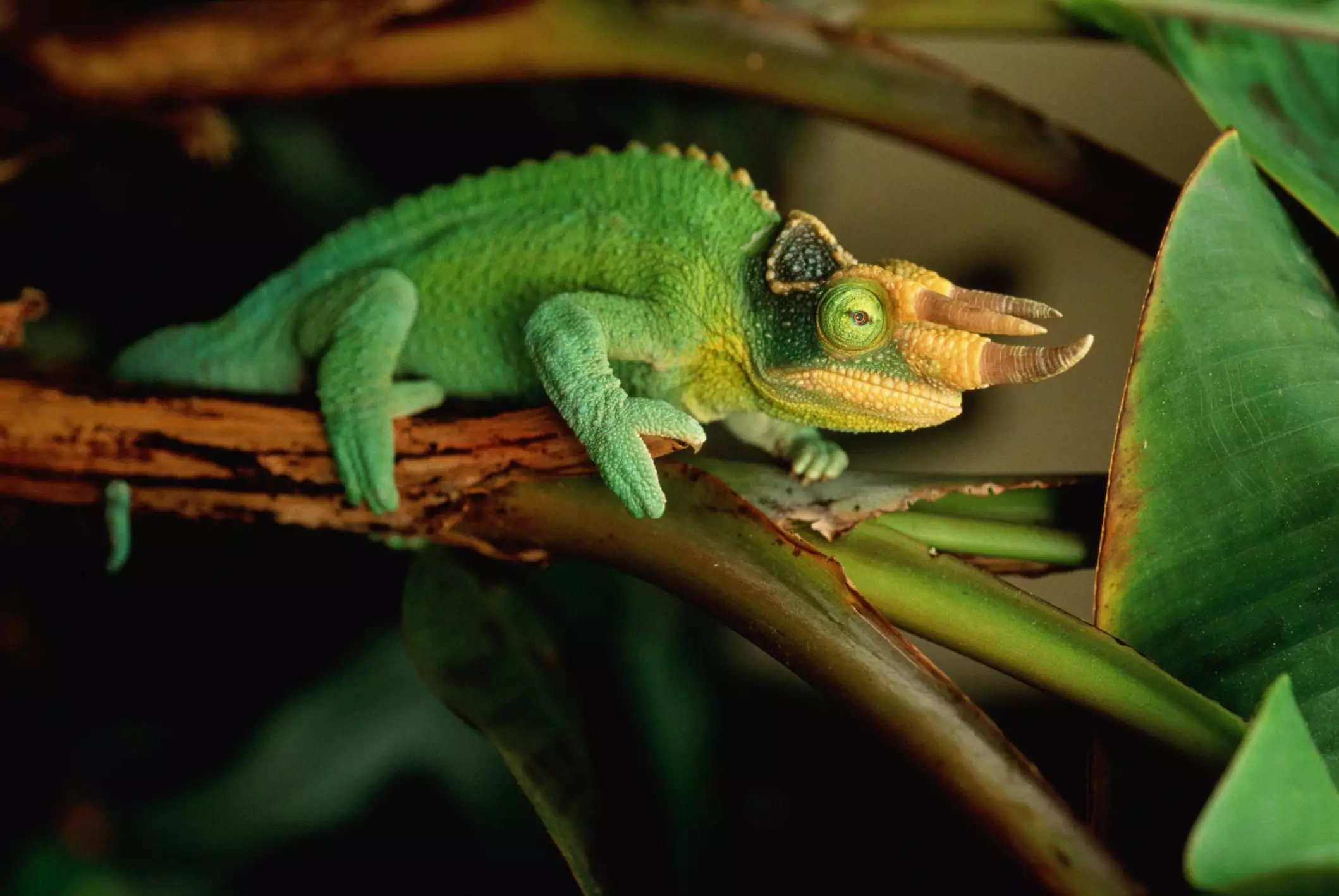Jackson’s chameleons, known scientifically as *Chamaeleo jacksonii*, possess unique traits that distinguish them from other reptilian companions. Named after Frederick Jackson, an ornithologist and former governor of Kenya, these striking creatures are originally from East Africa but have made their way into regions like California, Hawaii, and Florida. As you delve into the fascinating world of Jackson’s chameleons, it becomes clear that their requirements for care and maintenance are as colorful and varied as their vibrant exteriors.
Jackson’s chameleons exhibit notable sexual dimorphism, with males generally sporting more vibrant colors than their female counterparts. Young chameleons initially present a brownish hue but transition to vivid greens as they mature around four to five months old. The males, often known for the distinct three horns above their eyes and the one on their nose, bring a unique visual element to their appearance, making them a popular choice among reptile enthusiasts.
Interestingly, these chameleons are territorial creatures, making individual housing a necessity. Unlike conventional pets that thrive on interaction, Jackson’s chameleons experience stress when handled, suggesting they may be better observed than touched. Their reclusive nature is a defining characteristic, which should inform how they are kept and cared for.
Creating an ideal habitat for Jackson’s chameleons requires a thoughtful approach to replicate their natural environment. Contrary to common belief, a glass terrarium is unsuitable; instead, a well-ventilated enclosure using mesh is recommended. This design allows for the essential airflow that these lizards require to thrive. The enclosure should feature ample vertical space as chameleons are natural climbers, preferring to establish themselves high above ground level.
For indoor accommodation, maintaining cleanliness is crucial to discourage mold and bacterial growth. Utilizing paper towels or newspaper as substrate can ease cleaning efforts. Although soil can be used as a substrate, it complicates maintenance. Additionally, integrating potted plants like pothos or hibiscus contributes to both aesthetics and functionality, as they offer climbing structures and encourage natural behavior.
Temperature management forms another critical component of a chameleon’s habitat. A temperature gradient of 70 to 80 degrees Fahrenheit during the day, with a basking area reaching up to 85 degrees Fahrenheit, simulates natural conditions. At night, a slight temperature drop helps mimic their native climate. Essential to their health is full-spectrum ultraviolet light, which must be provided for 10 to 12 hours daily, reinforcing the importance of appropriate lighting for these creatures.
Maintaining optimal humidity levels between 50 to 80 percent is vital; this can be achieved through regular misting of the plants within the enclosure. Additionally, utilizing a drip or misting system serves both to regulate humidity and provide hydration. Jackson’s chameleons typically do not drink from a water bowl; they are more inclined to lap up water droplets on foliage. A hygrometer is recommended to ensure humidity measurements are accurate, allowing for timely adjustments based on monitoring.
As insectivores, Jackson’s chameleons thrive on a diet rich in various insects such as crickets, mealworms, and roaches. It is imperative to ensure that these insects are gut-loaded before being offered to the chameleon. Wild-caught insects should only come from reliable sources where they haven’t been exposed to harmful pesticides. While insects are a primary food source, chameleons may also consume limited plant materials, including non-toxic leafy greens like collard and mustard greens, adding another layer of complexity to their diet.
Careful monitoring of feeding habits is essential; uneaten food should be promptly removed to avoid injuries from the insects. Signs of ill health, including lethargy or abnormal eating patterns, should prompt an immediate evaluation of diet and habitat conditions.
In terms of health, Jackson’s chameleons are vulnerable to various ailments, including respiratory and fungal infections. Regular check-ups with a qualified reptilian veterinarian, particularly after acquiring a new chameleon, are advisable. Conditions like cloudy eyes or swollen limbs can signify underlying health issues that require immediate attention. Owners should familiarize themselves with the signs of distress—such as drooling or wheezing—so they can respond with appropriate care and intervention.
Using reputable breeders ensures a higher chance of receiving a healthy chameleon, minimizing the risk of introducing parasites or other illnesses into your home. By attending to their habitat needs, dietary requirements, and health monitoring, you can help ensure that your Jackson’s chameleon leads a long and healthy life, enriching your experience as a responsible pet owner.

